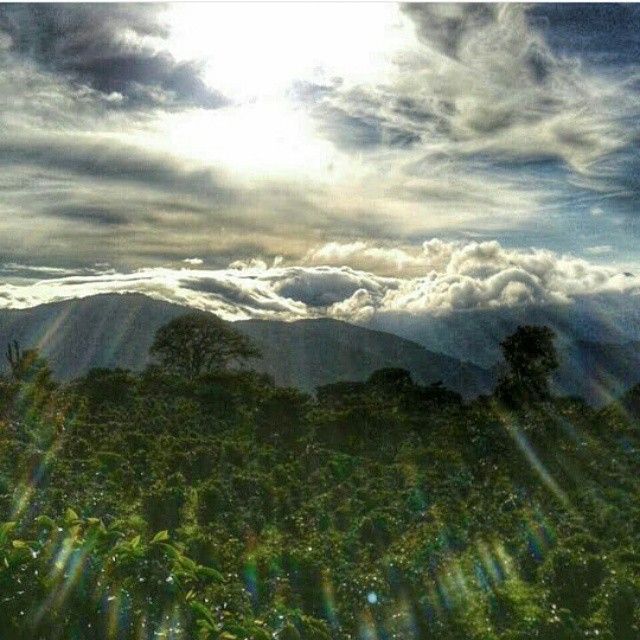Antigua coffee beans in Guatemala-mild coffee beans from dangerous places

For professional baristas, please follow the coffee workshop (Wechat official account cafe_style)
"Guadi" is a nickname given to Guatemala by coffee lovers. The Mayan town sits on top of 37 volcanoes, two of which erupted in 2010. Coupled with frequent tornadoes and natural disasters everywhere, it is a veritable "dangerous place". However, fertile volcanic soil, undulating mountains and changeable microclimate are ideal conditions for growing coffee. As of 2011, Guatemala was the country with the highest coffee production in Central America.
Very hard beans, mild coffee.
In the past, importers divided coffee into two categories: Brazil and Brazil and Mild. At that time, Brazilian coffee was a negative example: mixed with immature, overripe or defective beans and treated with unstable sun exposure, the coffee produced was difficult to swallow and of poor quality. Guatemala is rich in water, coupled with mechanical technology from Germany, so that the advantages of washing treatment can be brought into full play. Guatemala extremely hard beans (Strictly Hard Bean) is the leader of mild coffee.
The planting environment is ever-changing
Guatemala has been growing coffee since around 1850. Before World War I, the Germans controlled as much as 80% of the country's production, most of which was exported to Germany. ANACAFE, the official coffee farmers' association, divided the country into eight regions according to region and flavor in the 1990s, and registered trademarks to promote the origin. These include Antigua, Acatenango, Huehuetenango and Atitl á n, where many award-winning farms are located. Common beans in Guatemala today include Typica, Bourbon, Caturra, Catua í, Pacas, Maragogype, Pacamara (a hybrid of the first two), Pache Comum (a local variety of Typica), and Gesha.
The author has tried geisha coffee produced in different countries. One from Guatemala, from the Acatenango district. Because the taste is too unique, the characteristics of the origin are completely overshadowed. If the performance of a geisha in Panama is an one-man show, Guatemala, which has an ever-changing planting environment, is a big stage for different varieties to blossom; the Emerald Manor won the championship with a geisha, and for a moment there is Finca El Injerto (Graft Manor) in Huehuetenango, Guatemala.
Grafted manor won many honors
The coffee that grafted the manor has won the prize in the COE contest every year since 2004 and won the presidential grade in 06, 08, 09 and 10 (i.e. a total score of more than 90 points). But unlike the Jade Manor, which competes with geisha, it competes with different kinds of beans every year. I still remember that in 2010, it won the title of 93.14 points for the Pacamara species, which was rated as "low acid and light taste" at that time, and brought up the planting fever throughout Central America! It can be seen that soil, climate and treatment are as important as bean genes. Since 2011, Graft, like the Emerald Manor, has held its own auction, in which a rare ancient species, Mocha, was sold in 2012 for a record price of US $550 (about HK $4290) per pound, making headlines in the New York Times.
The author's shop is the first coffee shop in Hong Kong to participate in COE and successfully win the bid. Friends who are interested in Guatemalan award-winning coffee might as well come and have a try.
Patrick Tam / tr. by Phil Newell)
Important Notice :
前街咖啡 FrontStreet Coffee has moved to new addredd:
FrontStreet Coffee Address: 315,Donghua East Road,GuangZhou
Tel:020 38364473
- Prev

Costa Rican coffee shop label custom introduction limited batch next-day geisha coffee flavor description
Professional barista exchanges please follow the coffee workshop (Wechat official account cafe_style) Costa Rica Coffee Tower Goddess Manor Geisha / Rosa / Geisha Solar treatment Costa Rica Dota El Diosa Geisha Natural limited sun micro-batches, special microclimate and volcanic ash soil (PH 4.85.4), the planting area is separately divided, in almost at
- Next

Visit the Guatemalan Coffee Manor to witness the process of Guatemalan coffee from seed to cup of coffee
For the exchange of professional baristas, please pay attention to the coffee workshop (Wechat official account cafe_style) basic data of the Republic of Guatemala ● area of Japan 1ram 3 Capital Guatemala City language Spanish Mayan nationals GDP 250,000 yen per person (year) 2009 members of the Guatemalan delegation include Mr. Matsuwon Coffee of Matsuwon Coffee Co., Ltd., Mr. Moji of Old New Co., Ltd.
Related
- Detailed explanation of Jadeite planting Land in Panamanian Jadeite Manor introduction to the grading system of Jadeite competitive bidding, Red bid, Green bid and Rose Summer
- Story of Coffee planting in Brenka region of Costa Rica Stonehenge Manor anaerobic heavy honey treatment of flavor mouth
- What's on the barrel of Blue Mountain Coffee beans?
- Can American coffee also pull flowers? How to use hot American style to pull out a good-looking pattern?
- Can you make a cold extract with coffee beans? What is the right proportion for cold-extracted coffee formula?
- Indonesian PWN Gold Mandrine Coffee Origin Features Flavor How to Chong? Mandolin coffee is American.
- A brief introduction to the flavor characteristics of Brazilian yellow bourbon coffee beans
- What is the effect of different water quality on the flavor of cold-extracted coffee? What kind of water is best for brewing coffee?
- Why do you think of Rose Summer whenever you mention Panamanian coffee?
- Introduction to the characteristics of authentic blue mountain coffee bean producing areas? What is the CIB Coffee Authority in Jamaica?

